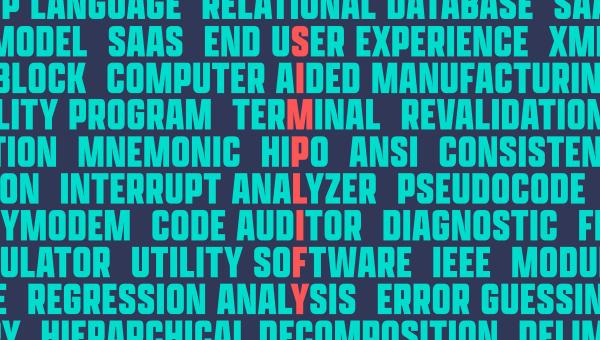How Employers View Digital Credentials: Insights, Expectations, and Hiring Trends
Introduction
in today’s rapidly evolving job market, digital credentials—including micro-credentials, online certificates, digital badges, and verified skills—have emerged as game changers in employee recruitment and development. But the key question remains: How do employers truly view digital credentials? Are they as valuable as conventional degrees and qualifications? This comprehensive guide delves into employer insights, evolving expectations, and the latest hiring trends related to online learning and digital certification.We’ll also provide practical tips to effectively showcase your digital credentials and maximize your career opportunities.
why Digital Credentials Matter in Today’s Job Market
- Growing demand for up-to-date, role-specific skills
- Rapid technological advancements and business agility requirements
- Remote and hybrid work environments increasing digital competency importance
- The democratization of learning and accessibility thru online platforms
The traditional career path, frequently enough defined by a single degree, is becoming obsolete. Instead, employers are eagerly searching for candidates with demonstrable skills that evolve just as quickly as modern jobs do. Digital credentials are uniquely positioned to fill this gap.
What Are Digital Credentials?
Digital credentials encompass a variety of proof-of-skill and achievement models, including:
- Digital Badges: Visual representations of skills earned through programs like Credly, Acclaim, and LinkedIn Learning.
- Online Certificates: Documented evidence of course or program completion from platforms such as Coursera, Udemy, edX, or professional organizations.
- Micro-Credentials: Short, focused qualifications that recognize specialized knowledge and skills.
- Verified Skills Assessments: skill verifications from platforms like LinkedIn, GitHub, and other portfolio-based services.
How Employers View Digital Credentials: Direct Insights
Employer perceptions on digital credentials have shifted dramatically in recent years, particularly following the digital transformation brought on by the global pandemic.
Positive Perspectives
- Skill-Focused Hiring: Employers prioritize practical skills and up-to-date knowledge over traditional diplomas for many roles.
- Demonstrated Commitment: Candidates who earn digital credentials showcase a proactive approach to learning and career growth.
- Verification Ease: Digital credentials are easy to verify online, speeding up screening processes and minimizing fraud.
Ongoing Concerns
- Quality Assurance: There is still some skepticism around the rigor and reputation of various platforms and courses.
- Recognizability: Not all digital credentials are universally recognized or valued equally across industries.
- Overwhelming Volume: With so many options, employers sometimes struggle to distinguish impactful credentials from less meaningful ones.
employer Expectations & the Latest Hiring Trends
Expectations employers Place on Digital Credential Holders
- Practical Request: Employers want to see how candidates have applied what they learned, not just the completion of a course.
- Reputable Sources: Credentials from well-known organizations or industry-specific leaders carry more weight.
- Ongoing Learning: A series of digital credentials (rather than a single badge) indicates a continual learning mindset.
Noteworthy Hiring Trends
- Skill-Based Recruitment: More job postings now focus on skills over degrees, especially in IT, marketing, and design.
- Utilization of Skills Assessments: Platforms like LinkedIn Skills Assessments or HackerRank are commonly used to validate candidate skills.
- Integration with ATS: Applicant Tracking Systems increasingly integrate digital credential verification to streamline resumes and applications.
- Diversity in Candidates: Digital credentials help underrepresented groups demonstrate abilities without traditional barriers.
Benefits of Digital Credentials for Both Employers and Job Seekers
For Employers
- Quick and reliable skill verification
- Access to a wider,more diverse talent pool
- Encouragement of continuous learning and upskilling within their workforce
- Reduction of hiring risks
For Job Seekers
- Enhanced employability and proof of specialized skills
- Greater accessibility to career opportunities
- Versatility to gain qualifications while working
- Boosted credibility and confidence in competitive markets
Practical Tips: How to Leverage Your Digital Credentials in the Hiring Process
- Select Quality Over Quantity: Choose digital certifications from reputable sources aligned with your career goals.
- showcase Application: Use your resume, cover letter, and interview responses to explain how you have applied your new skills in real-world contexts.
- Update Online Profiles: Add digital badges or completed courses to your LinkedIn profile and personal website portfolios.
- Seek Endorsements: Ask instructors or course facilitators for recommendations or testimonials.
- Stay Current: The job market evolves quickly—keep your credentials up to date by enrolling in the latest programs.
Case Studies: First-Hand Employer and Employee Experiences
Case Study 1: Tech Startup Scaling with Skills-Based Hiring
A European software startup replaced traditional resume screening with digital badge verification for developers. The result? Time-to-hire dropped by 30%, and the diversity of hires increased, as applicants from non-traditional backgrounds excelled in skills assessments and real-world coding challenges.
Case Study 2: Professional Growth via Micro-Credentials
Jessica, a digital marketer, accumulated micro-credentials in Google Ads, email marketing, and analytics. By prominently displaying these on her LinkedIn profile and referencing practical campaign successes in interviews, she landed a senior marketing role at a Fortune 500 company within six months.
WordPress Styling Tip
To give your digital credentials articles a modern, engaging look on wordpress, you can use the following CSS snippet:
.digital-credentials-article {
font-family: 'Segoe UI', Arial, sans-serif;
background: #f7fafd;
border-radius: 8px;
padding: 32px;
margin: 32px 0;
box-shadow: 0 2px 12px rgba(0,0,0,0.04);
}
.digital-credentials-article h2 {
color: #005792;
margin-top: 24px;
}
.digital-credentials-article ul {
list-style-type: disc;
padding-left: 24px;
}
.digital-credentials-article pre {
background: #e3f1fa;
padding: 12px;
border-radius: 4px;
}
Conclusion
The way employers view digital credentials is rapidly evolving. While traditional degrees continue to hold value, hiring managers now actively seek—and often prefer—candidates who demonstrate verified, up-to-date, job-relevant skills through digital badges, certificates, and micro-credentials. By understanding employer expectations and keeping an eye on the latest hiring trends, jobseekers can strategically leverage digital credentials to accelerate their careers. In this new digital-first employment era, embracing continuous learning and skill validation is the surest way to stay ahead of the curve.
Ready to boost your career with digital credentials? Start researching reputable programs,showcase your skills online,and take your professional journey to the next level!

